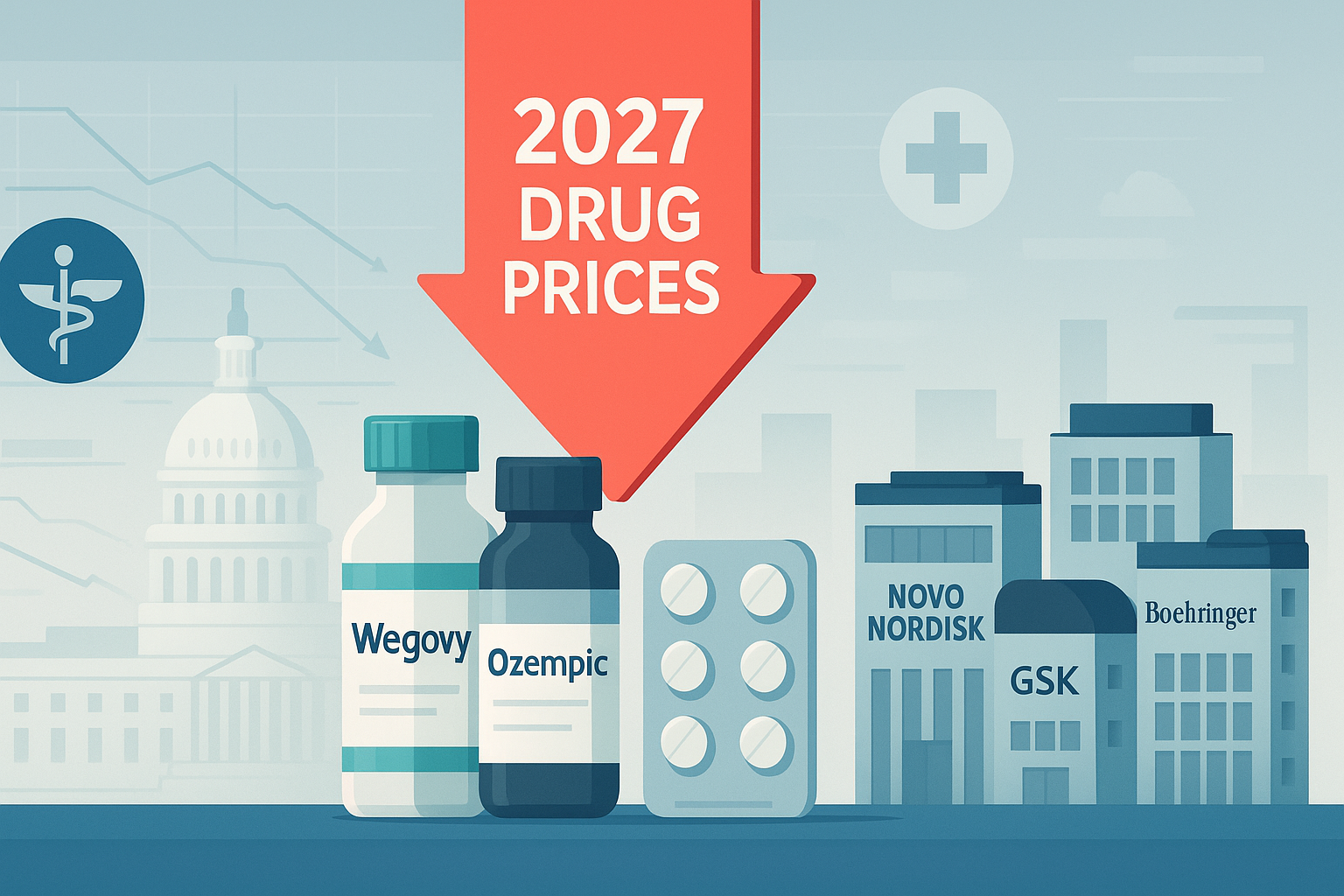Medicare has negotiated steep new prices for 15 high-cost drugs, including Novo Nordisk’s blockbuster semaglutide (Wegovy and Ozempic), with negotiated prices set to take effect in 2027.
The move cuts projected Medicare spending by an estimated $8.5 billion to $12 billion annually and forces drugmakers to reassess pricing, access, and strategy on the world’s largest market.
The announcement arrives at a delicate political moment, reflecting both Biden-era policy continuity and Trump administration negotiating tactics that have reshaped pharmaceutical pricing expectations.
This matters because the new price structure could reshape business models across European pharma.
Novo Nordisk, AstraZeneca, GSK, and Boehringer Ingelheim face pricing pressure that ripples beyond the US, forcing them to recalibrate global strategies and prepare for tougher negotiations worldwide.
Policy & market snapshot: the numbers and immediate reactions
Medicare will pay $274 monthly for semaglutide (sold as Ozempic for diabetes and Rybelsus), down from a 2024 list price of $959, a 71% reduction representing the steepest discount in the negotiation round.
Wegovy for weight loss will cost $386 monthly, also down 71% from the list.
The 15-drug package spans cancer, respiratory, and metabolic conditions, with discounts ranging from 38% to 85% off published list prices.
The CMS estimates total Medicare Part D enrollment savings of roughly $685 million once prices take effect in 2027, though the full budget impact depends on volume and the interaction with prior separate most-favored-nation deals announced by the Trump administration.
Market reaction was muted: Novo Nordisk shares rose 4.8% on the news, with analysts noting the hit was “largely anticipated” and prior guidance already factored in a low-single-digit global sales impact of roughly 6 billion Danish crowns ($900 million) if cuts were implemented immediately.
Peers fared similarly, with AstraZeneca and GSK each trading flat, as Shore Capital’s Sean Conroy noted that “cuts are already reflected in company guidance”.
Novo said in a statement: “We continue to have serious concerns about the Inflation Reduction Act’s impact on innovation,” warning of potential coverage losses and higher premiums, though the company accepted the deal.
Analytical take: revenue trade-offs and strategic responses
The real test for Novo Nordisk and European pharma is whether higher patient access and volume can offset margin compression.
JPMorgan analysts said the impact was “already captured in Novo’s forecast,” implying limited surprise to earnings.
However, the devil lies in execution: semaglutide is Novo’s revenue engine, the drug alone generated over $14 billion in gross Medicare costs in the past year, so even modest volume gains would need to offset significant per-unit margin loss.
Strategic responses are already emerging. Novo Nordisk has cut direct-to-consumer prices to $349 monthly for Wegovy and Ozempic, unlocking uninsured and high-deductible patients outside Medicare.
The company is also accelerating pipeline launches: oral Wegovy (2026) and CagriSema (a combination therapy) could diversify revenue and restore growth if market adoption accelerates.
For GSK and AstraZeneca, the pressure is narrower; their drugs represent smaller revenue streams, but both are preparing for similar payer pressure in Europe and Asia, where tender systems and health-technology-assessment bodies now cite Medicare’s rates as benchmarks for negotiation.
The broader structural risk is that negotiated Medicare prices reset payer expectations globally.
Boehringer Ingelheim noted that over 80% of its US business is now subject to government-negotiated prices; the firm warned that this “siphons billions from research and development”.
Yet, industry opposition has not slowed the program. The third round of Medicare negotiations begins in February 2026, with expectations that another 15 drugs will be selected.
The real question: can Novo Nordisk and European peers convert lower prices into market expansion, or will unit economics and competitive pressure force cost-cutting and slower innovation?
Investors will be watching guidance updates, EU regulator reactions, and early Medicare uptake data when it arrives in 2027.
The post How Medicare’s new drug prices could reshape Novo Nordisk and european pharma appeared first on Invezz

